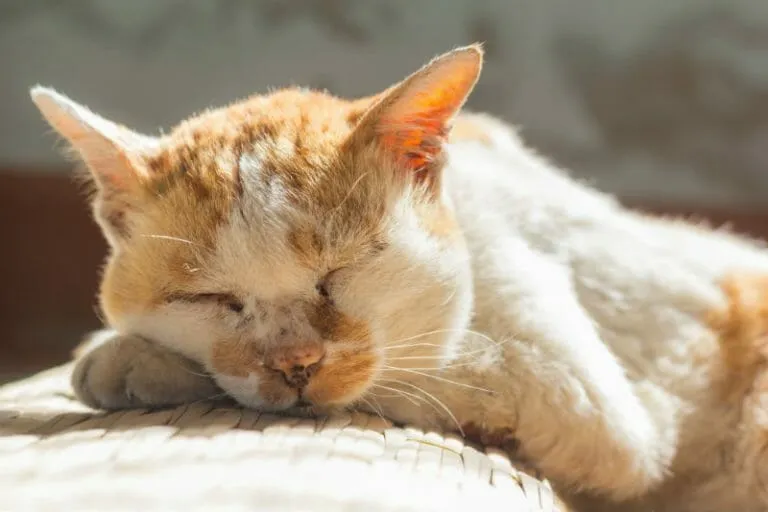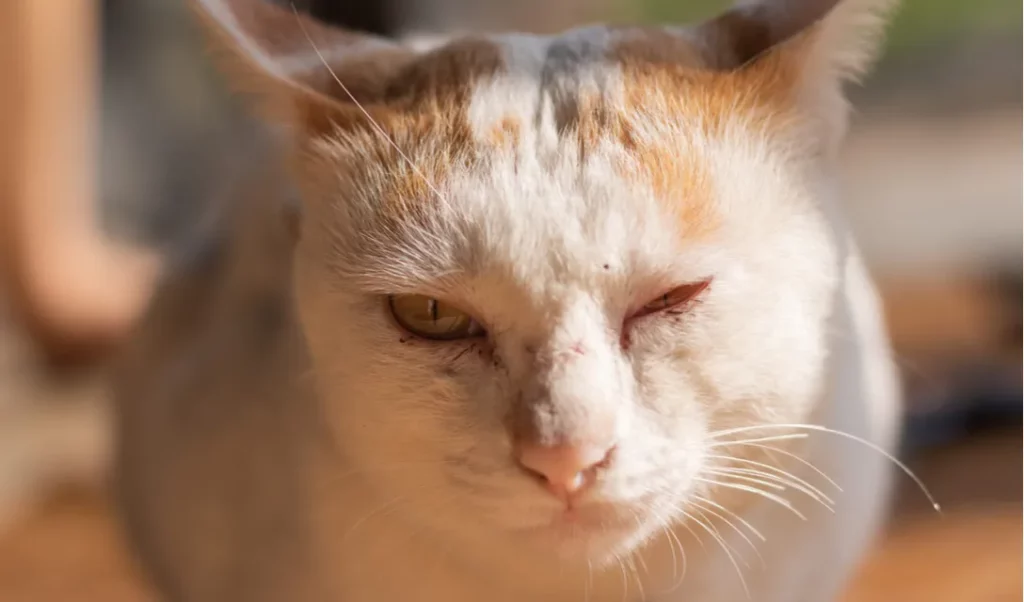Have you been looking for effective steps you can use to treat a cat with allergies? Here, you will get to know how you can treat a cat with allergies.

Cats are known for their playful behavior and affectionate nature, also they are cherished pets for many households.
However, just like humans, cats can suffer from allergies, which might affect their health and overall well-being.
Furthermore, identifying and managing a cat’s allergies is crucial to ensure their comfort and prevent potential health complications.
As you keep on reading, you will get to know the 8 effective ways to treat a cat with allergies.
How to Treat a Cat With Allergies

Here are the eight effective ways to treat a cat with allergies:
1. You Need to Understand Cat Allergies
Before diving into treatment options, understanding cat allergies is fundamental.
Cats can be allergic to various factors, including food, environmental elements, fleas, or certain materials.
Allergies often manifest through symptoms like itching, skin irritation, sneezing, coughing, and gastrointestinal issues.
Also, it’s essential to differentiate between an allergy and other health concerns, which may require veterinary diagnosis.
2. Consult a Veterinarian
The primary step in treating a cat’s allergies is consulting a veterinarian.
Furthermore, a professional diagnosis is vital to pinpoint the exact cause of the allergy.
A vet can conduct tests to determine the allergen triggering the reaction, enabling tailored treatment plans to alleviate the cat’s symptoms effectively.
3. Provide the Cat With Adequate Diet
Food allergies are prevalent in cats and adjusting the feline’s diet can significantly impact allergic reactions.
Opt for hypoallergenic or limited-ingredient diets that exclude common allergens like grains, artificial additives, or specific proteins.
Also, gradually introducing new foods while monitoring the cat’s reaction is crucial to identify triggers and maintain a balanced diet.
4. Change the Environment of The Cat
Environmental factors can heavily influence a cat’s allergies. Furthermore, minimize exposure to potential allergens such as dust, pollen, and mold.
Regular cleaning and vacuuming, air purification, and reducing humidity levels indoors can mitigate allergic reactions.
Additionally, consider using hypoallergenic bedding and non-toxic cleaning products to create a more allergy-friendly environment for your cat.
5. Engage in Flea Control
Flea bites can cause allergic reactions in cats.
Implementing a robust flea control regimen is essential in controlling cat allergies. Also, use veterinarian-recommended flea treatments, such as topical solutions or oral medications.
Regular grooming and cleaning of the cat’s living areas help prevent flea infestations, reducing the risk of allergic reactions.
6. Provide the Cat With Medication and Supplements
In cases where environmental modifications aren’t sufficient, medication or supplements prescribed by a vet might be necessary.
Antihistamines, steroids, or immune-modulating drugs can help alleviate symptoms.
Additionally, supplements like omega-3 fatty acids might aid in reducing inflammation and improving skin health for cats with allergies.
7. Give the Cat Allergy Shots (Immunotherapy)
Immunotherapy, commonly known as allergy shots, can be an effective long-term solution for cat allergies.
Administered under veterinary supervision, these shots expose the cat’s immune system to small amounts of the allergen, gradually desensitizing the cat and reducing allergic reactions over time.
8. Provide a Stress-Free Environment For the Cat
Believe it or not, stress can exacerbate allergy symptoms in cats.
Also, providing a stress-free and comfortable environment is crucial.
Engage your cat in stimulating activities, offer cozy resting spots, and ensure a calm, peaceful atmosphere to reduce stress levels.
How to Get Rid of Cat Allergies Naturally

Cat allergies can cause discomfort for those sensitive to pet dander, saliva, or urine.
While there’s no guaranteed natural remedy to eliminate cat allergies, some strategies may help alleviate symptoms.
Also, these include regularly grooming your cat to reduce shedding, vacuuming and cleaning your home frequently, using air purifiers, creating pet-free zones in the house, and using hypoallergenic bedding or covers.
Furthermore, some individuals find relief with natural remedies like saline nasal rinses or herbal supplements, although the effectiveness of these methods can vary.
However, it’s essential to consult a healthcare professional or allergist to discuss suitable options, as natural remedies may not work for everyone.
Cat Skin Allergy Treatment?
Cat skin allergies can manifest as itchiness, redness, or irritation.
If your cat is experiencing skin allergies, it’s crucial to identify the underlying cause.
Common culprits include flea bites, food allergies, or environmental factors. Furthermore, cat allergy treatment often involves addressing the primary cause.
Regular flea prevention, a balanced diet, and minimizing exposure to potential allergens can help.
Additionally, your veterinarian might recommend medicated shampoos, dietary changes, or antihistamines to alleviate skin irritation.
For severe cases, a vet might prescribe corticosteroids or other medications to manage the symptoms.
Does My Cat Have Allergies or a Cold?
Distinguishing between cat allergies and a cold can be challenging as symptoms may overlap.
Allergies typically involve persistent sneezing, itching, watery eyes, or skin irritation.
Conversely, a cat cold might involve sneezing, nasal discharge, coughing, or lethargy.
Also, understanding the duration and patterns of symptoms can help differentiate between the two.
Allergies tend to persist over time, while a cold might resolve within a week or two. If in doubt, consult a veterinarian for a proper diagnosis and suitable treatment.
How to Treat Environmental Allergies in Cats
Environmental allergies in cats, often caused by pollen, dust mites, or mold, can lead to itching, skin irritation, or respiratory issues.
Furthermore, to manage these allergies, minimizing exposure to potential triggers is key.
Keep the house clean by vacuuming regularly, use air purifiers, wash bedding frequently, and create an allergen-free zone for your cat.
Your vet might suggest antihistamines, corticosteroids, or immunotherapy to help alleviate symptoms.
However, it’s crucial to work closely with your vet to identify triggers and develop a tailored treatment plan for your cat’s environmental allergies.
In conclusion, managing a cat’s allergies involves a multifaceted approach, ranging from dietary changes and environmental adjustments to veterinary guidance and stress reduction.
Related Searches:
